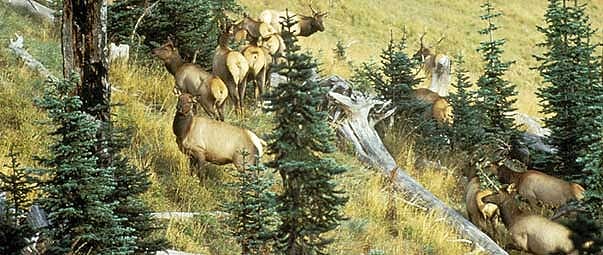The U.S. Census Bureau projects that human populations in western states will grow twice as fast as other states over the next 18 years. The Rocky Mountain Elk Foundation offers five ways to prepare for the growth and ensure a future for elk, other wildlife and their habitat.
RMEF leaders say the population forecast defines an alarmingly short window for conservationists to help shape the heart of elk country before an additional 20 million people are living in the region by 2030.
“We have to work with an increasing sense of urgency,” said RMEF President and CEO David Allen. “We often talk about conserving wild places for our kids and grandkids to enjoy, and that’s powerful motivation,” he said. “But we’re on the doorstep of landscape-scale changes that will affect current generations, too, if we don’t act quickly.”
According to the Census Bureau, states along and west of the Rocky Mountains will see an average of 28 percent growth by 2030. For all states eastward, the bureau anticipates an average growth rate of just 14 percent.
About 90 percent of all elk in North America occur in the rapid-growth states.
RMEF’s five ways to prepare:
1. Good Planning. Any profusion of poorly planned subdivisions, sprawl or related activity could accelerate loss, fragmentation and degradation of elk habitat. Consideration of these areas is increasingly important for developers, city planners, highway engineers, food and energy producers, etc. To help, RMEF contributes habitat data to mapping programs available to professionals who wish to identify and avoid critical areas of elk country, including winter range, calving grounds, summer range, and migration corridors. Elk do best with unimpeded travel routes between habitat types.
2. Land Protection. Conserving strategic tracts of open space is a key to offsetting human population growth. Tools include purchasing land from willing sellers and conveying it to public ownership, land swaps and conservation easements.
3. Habitat Stewardship. Managing protected habitat for optimum productivity is ever more important. Prescribe burning, treating noxious weeds, forest thinning to create early habitat, rejuvenating meadows and wetlands, improving riparian zones and adding guzzlers are among the ways to help habitat hold more wildlife.
4. Predator Management. Much of elk country no longer resembles its original form. People made it smaller. Fire suppression made it thick and overgrown. Noxious weed infestations made forage problems even worse. Elk are amazingly adaptable but in certain areas they are proving unable to handle the added challenge of burgeoning predator populations. Calf survival rates are too low to sustain some herds for the future. Current and expected habitat conditions dictate responsible management of wolves, bears and lions on balance with other wildlife and human needs.
5. Keep Hunting. With the anticipated population growth in the West, open space and opportunities for hunting could be reduced. Loss of hunters will translate to less wildlife management and less funding for conservation overall, which will compound all of the above problems. RMEF is prioritizing projects that enhance public hunting access and strengthening America’s understanding of the important conservation heritage of hunting.
RMEF is positioned to make a difference over the critical 18 years to come.


